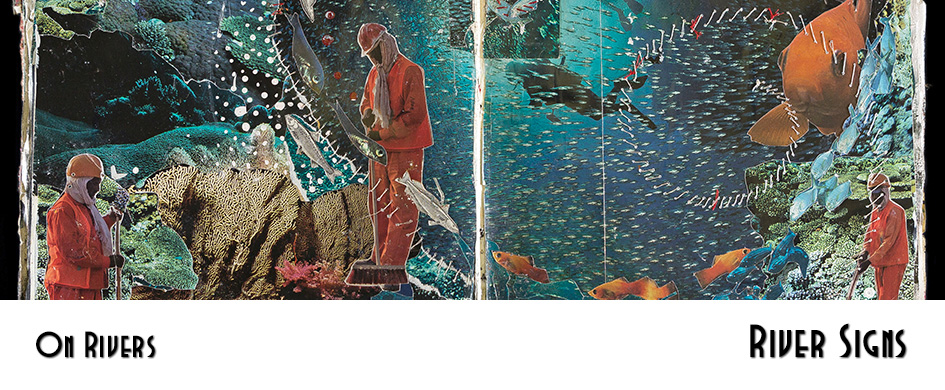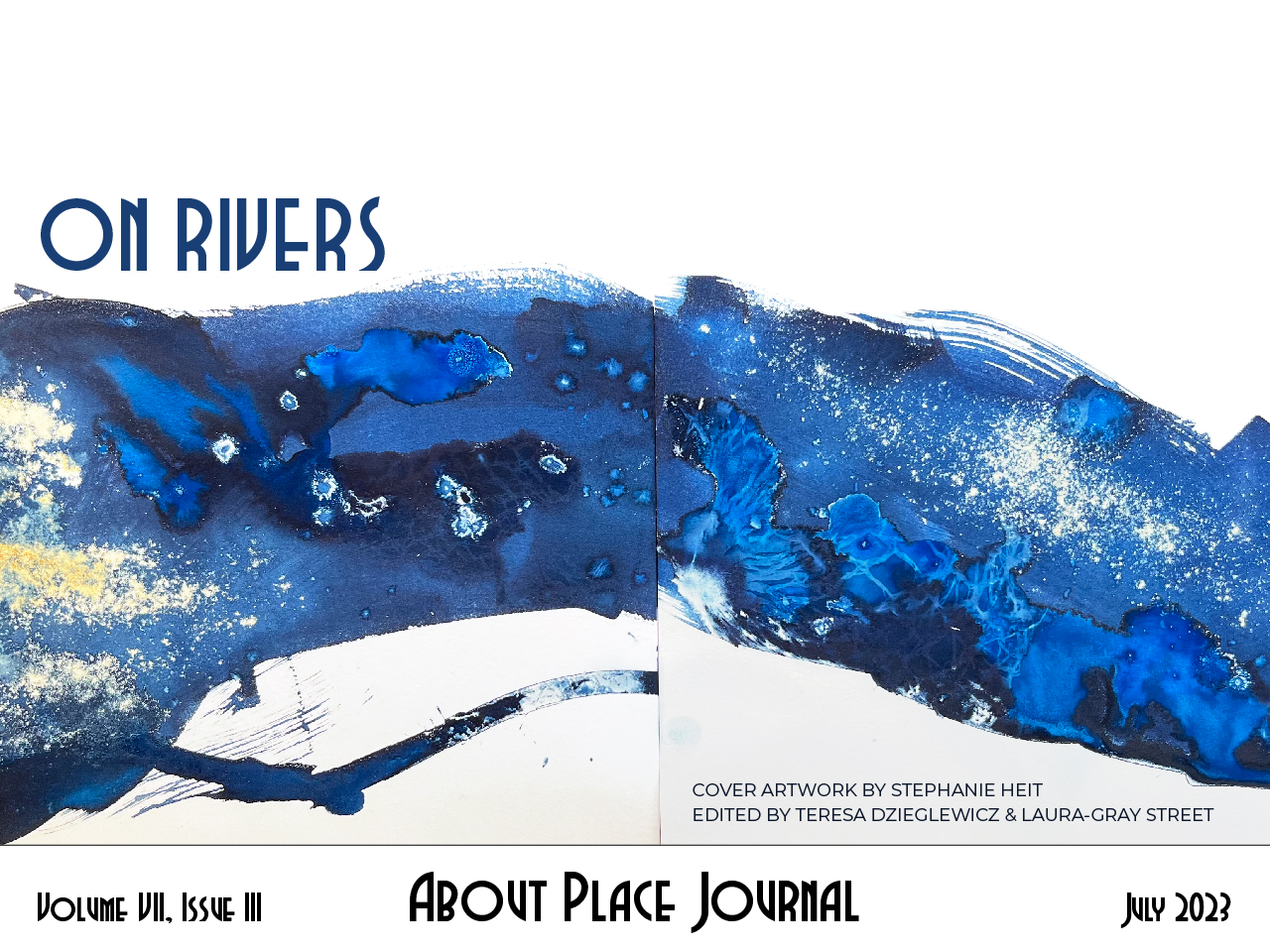When the tarot card reader tells me I will live along the edge of water, I smile. Wistfully.
She is mistaken, of course. My house sits on the corner lot of a suburban street, surrounded by a fence and trees and families of deer.
I am happy here.
Time pulls its own cards, though, reveals patterns, interpretations. New meanings emerge sometimes when one card is pulled in conjunction with another.
And a few years later I find myself driving westbound on the Pennsylvania Turnpike with my husband, through miles of farmland, from one city’s fringe to another. Countryside, quilted, terrain cut into parcels, emerald and gold, stitched back together by winding creeks, by long straight lines of river birch, evergreen.
Behind us, months of cancer treatment. His lungs. Stage three, non-small cell carcinoma.
With us, fear of its return.
Here, we shape a nest high-up on a cantilevered shelf. We gather twigs and pine needles, broom bristles and shredded paper, and we knit together walls around us, make known: This is the space we take up now.
This, we have chosen.
One thousand feet and sixteen flights above the place where three rivers meet.
Often, it is hard to know when one story ends and another begins. It is like this with rivers.
Aloud, I speak the word confluence, desire its sound.
Through our first months of a steel-gray winter, from our window seat I survey the jutting landform below, the tip of the Golden Triangle. A place of convergence: The Allegheny, The Monongahela. A point of origin: The Ohio.
In any new place: a sense of isolation, an awareness of being alone. I search the unfamiliar landscape first for what connects—me to the earth—the earth to itself.
Places of stillness, growth. Edges, inlets, protected. Black spruce, with their shallow roots, leaning toward what rushes by. American sycamore, bark shedding like skin, a bone-white scaffolding held in the slant of winter light. Exposed, rising up from the bottomlands, stark alongside spans of corrugated brown.
Places, too, of disturbance and unrest. River water mixing. Or stratifying instead, sometimes. After heavy rain, the way a line forms at the confluence, where the siltier, stirred-up Monongahela brings mud to meet the blue-green Allegheny.
Some days, the sediments of these two rivers remain separate for a much greater distance, not merging there at the point of confluence but farther along the Ohio.
Living now in close proximity to three rivers, I study the language of fluvial process, words to make sense of the physical interaction of flowing water.
Fluvial, from the Latin word fluvius, meaning river.
Meander. Bend. Reach.
Erosion. Transportation. Deposition.
When the velocity and volume of water are in balance, neither erosion nor deposition occurs. Equilibrium is achieved, though most often it is fleeting.
Slip. Heave. Throw.
Faulting disrupts, displaces. Erosion proceeds upstream from the fault, deposition downstream.
What follows is consequent, subsequent, antecedent.
Headwaters, a new beginning. Because everything has a starting point somewhere.
An initial source.
My husband’s cancer begins as one small primary tumor. Let’s watch it, they say, possibly just a shadow. Until it isn’t. Let’s biopsy it, they say, it’s small. Until it spreads. Until cells break away, travel, find their way to four lymph nodes in the mediastinum, form new tumors.
Metastatic. The break away and ensuant travel of cells from the place where they first formed, through the blood or lymph system, to another part of the body.
Body.
Body of water.
I consider patterns of flow.
And drainage patterns. The way rills and gullies take shape, notch the landscape, accelerate fluvial erosion.
The way natural floodplains and deltas form, lessen the likelihood of disaster: Cutbanks. Meander-scroll ridges. Crevasse channels and splays.
Some days, I am the river. Some days, I am what’s been swept away. Alluvium. Loosened, lifted. Deposited elsewhere, left behind.
Often, anymore, I don’t know how to be in this world. To navigate what threatens. Not only me, but the ones I love, this earth upon which we live.
My husband’s cancer may have begun years ago on a Marine Corps Base Camp in North Carolina. The water contaminated. Drinking water found to contain toxic chemicals.
How do we let this happen?
Most days, I want to cry.
Of course, the world continues. And we move from one crisis to another.
I tell you this / to break your heart, / by which I mean only / that it break open and never close again / to the rest of the world.
And I want this to be enough. The heart open, unguarded.
But a single plastic bottle floating on the river takes four hundred and fifty years to degrade, breaking down along the way into microplastics, leaking toxins, being consumed by marine life.
My heart is flooded. Sometimes my want to fix what is wrong with the world feels like drowning.
I save myself, sit by the window, watch down below as the rivers keep coming, meeting at Point State Park, forming the Ohio, flowing northwest out of Pennsylvania, then southwesterly to join the Mississippi.
Sometimes this has to be enough: All these ways the river beckons: Pay attention.
On sunlit days, the shift of bridge shadows across the surface of each river. Sequins of light flickering.
At night, the ripple of everything reflected.
That first summer in Pittsburgh, we decide to buy a boat. To bring ourselves even closer to the water. To learn. To explore.
But it is hard as a human to exist on water without doing harm.
I assure myself I’m not the only one. I convince myself my intrusion is no more damaging than anyone else’s.
I call it curiosity. Research. Fun. And perhaps it is all of those things.
But what I see happening around me cannot be unseen.
Spilled fuel or waste from boats contaminates water. And a single cigarette butt can take fourteen years to break apart, seeping toxic chemicals in the process—arsenic, lead, formaldehyde, nicotine. And a plastic bag can take up to twenty years to decompose.
I note these things. But I note, too, the blue heron. Its beauty. Its tall, thin body poised on the sloped banks. Each time, I slow down, circle back, cut the engines, wait for the heron’s wings to lift, for its body to glide horizontally just above the water. Its shape mirrored in the surface below.
I snap photographs, zoom in, zoom out, hope for the post-worthy shot: Look! Here I am, one with nature.
It seems genuine. Until it doesn’t.
Until I feel like an interloper. A trespasser in this blue heron’s home.
I am of two minds. Or, perhaps three, like Wallace Stevens.
When the [heron] flew out of sight, / It marked the edge / Of one of many circles.
Scans of my husband’s lungs are clear. His oncologist is optimistic.
We are buoyed by this news. We celebrate.
Though fear has pressed itself deep into the matter of our days. Fastened itself to nerve endings in our bodies.
It has folded itself into memory. Words hinged. Heavy.
Outside: Wind hurrying clouds, pushing against the river’s current. Its surface like figured glass—textured, opaque.
I think back to time right after his treatment, how the radiation oncologist had pointed to an area on the scan of my husband’s lungs, said ground glass opacities. How we’d learn that murky gray pattern could be from the radiation. Or, it could be of concern.
We would have to wait.
While minutes sprawl, hours-long. While days sweep wide into weeks.
Turbulent flow is loud, complicated. It is caused by excessive kinetic energy. There are fluctuations, barriers, changes in both magnitude and direction. It is the opposite of laminar flow.
From the window seat, I stare down at the river most often when it is quiet, water flowing smoothly, unhindered. Simple, in a singular direction.
Laminar flow calms me. It beckons, stay awhile. It reminds me to breathe, to know how it feels not to be at fear’s mercy.
Here, in these moments, I consider how it is—how it was—my husband and I have come to this place, this exact point at the confluence of three rivers: 40.4416° N, 80.0079° W.
Here, now, everything from before held in the wash of our westward migration.
The mind, a catchment.
Memories, thus caught.
All the seasons, the snowstorms and flower blooms, the streets fringed in sweetgum and copper beech. All the mailboxes and birdfeeders, the wheelbarrows and fences and flagstone footpaths.
All the night skies stitched with stars, the moon and all its phases.
And all the ways in which we survived.
Always, though, until now, the flow of water somewhere else, faraway.
Here, this merging. This juncture. This watersmeet just beyond, below, our window.
Somehow it seems manifest that I study the way water moves. That I become fluent in its language.
I learn hydrodynamics is a branch of physics concerned with the motion of fluids and the forces acting on solid bodies immersed in fluids and in motion relative to them.
Along the span of these three rivers, twenty-three locks and dams have been designed by the Army Corps of Engineers. At each one, the lockmaster has full authority over the movement of boats in the lock and its approaches.
Boats are raised and lowered inside chambers, gates opened and closed at each end.
In this way, the depth of water is calculated, measured, maintained for safe navigation.
I learn to lock through. To signal my desire for lockage by sounding the alarm at the end of the lock wall. To pass the mooring line up to tie the boat safely to the lock wall. To pay out or take in mooring line as the water level in the lock rises or falls.
How all of this lulls me, lets me think there exists control. That it’s possible to account for everything.
How I want this to be true.
For the body, too. How water makes its way in. How the blood system absorbs it, delivers hydration to every cell. Arteries connecting parts of the body to one another, just as a river knits together creeks and streams, lakes and underground springs.
The whole of the body, a watershed.
This one word, in a language where words often compound, fuse together: Inflow. Outfall. Streambed. Windthrow. Spillway. Setback.
On my husband’s latest scan, a spot they see on his liver. Small.
An MRI is ordered.
Again, we wait. Breath held.
…and find there / pure, sudden, steep, sharp, painful / gratitude / that falls— / I don’t know—either / unbearable tons / or the pale, bearable hand / of salvation…
Most days, I want to cry.
How have we let this happen?
Again.
This time, a train derailment in Ohio.
1.1 million gallons of water contaminated. An estimated 3,500 fish, twelve different species, are found dead.
Waterways that lead to the Ohio River: under investigation.
The human toll…
…
…
…
I will grieve of course, but that’s nothing. / “What, precisely, will you grieve for?” / For the river. For myself, my lost / joyfulness. For the children who will not / know what a river can be—
For the body, a river basin. Catching. Draining. Seeping. Whatever happens in one part, finding its way to the others.
Notes:
Mary Oliver, Devotions, “Lead,” “Stones,” “From This River, When I Was a Child, I Used to Drink”
Wallace Stevens, “Thirteen Ways of Looking at a Blackbird”


